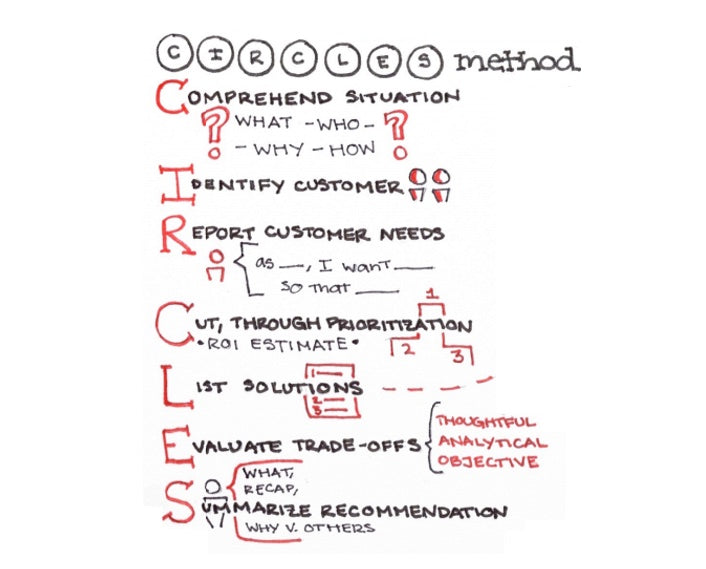
SEE ALSO: How to Ace the Facebook Product Manager Interview (Second Edition)
We are thrilled to have a guest post from Ayan Halder. Ayan is an experienced technology veteran with experiences spanning both product management and software engineering roles. His experience includes TeleSign, a digital identity and programmable communications company, and Tata Consultancy Services, the venerable tech consulting company. Ayan holds multiple degrees including an MBA from the University of Rochester's Simon Business School.
What is Facebook's Product Sense interview?
Facebook product managers own and manage global-scale products. They are navigating constant ambiguity when it comes to problem-solving. They think about their product 24x7 to identify the most pressing problems for its users, the most impactful solutions, and how the product ties back to Facebook’s strategy.
It’s not possible to assess every aspect of that process during an interview.
So, the product sense interview serves as a proxy. Essentially, this interview is all about how you think about user problems at scale, and turn that into a concrete product(s).
Any and every question that might require you to think about users is, in some way, a product sense question.
But there are certain ones that qualify as a core product sense question. Some examples are:
- How would you improve Instagram stories?
- Build a Facebook product for travel.
- How would you build Facebook Birthday if it weren't there?
As you see, these questions are either about improving upon an existing product or thinking about a new one from scratch.
What is the interviewer is looking for?
Some of the traits the interviewer is trying to assess during the interview are:
- Can you articulate an ambiguous problem well?
- Are you able to break down the problem into iterative steps that are manageable?
- Are you solving a core challenge for the users and being thoughtful about it?
- Are you able to reason your way through all your choices along the way? Are those reasons good enough for Facebook to give a go/no-go?
- Do you understand the trade-offs involved?
How to prepare for it?
With all said, the question comes to how to prepare for this type of interview. The process is challenging but extremely rewarding and helps improve the overall thought process tremendously.
Start With A Framework
Frameworks are steps that can be taken to structure a complex, ambiguous problem into manageable and actionable chunks.
If you’re just starting, it might be helpful to start with a framework to get the right structure set. One of the famous ones is Lewis Lin’s CIRCLES™ framework that lets you provide a well-rounded and thoughtful answer.
Gradually Mature And Internalize The Framework
Although the CIRCLES framework is comprehensive and forces you to think from multiple perspectives about a problem, it’s essential that as you get comfortable with this framework, you start exercising your judgment.
For example, certain questions might demand that you talk a bit through the Go-To-Market Strategy while others might need you to walk the interviewer through a typical user journey on your proposed solution. So, instead of following the framework as a checklist, follow it as a mind map that reminds you what to include but also keep yourself flexible.
As you mature into a better interviewee, there are certain things to keep in mind:
Reach the core of the problem
Identify the core challenge faced by the users of the product. If you’re designing an app for Uber for kids, solving for safety will be infinitely more important than anything else.
Provide reasoning for prioritization that is difficult to counter
You will prioritize at every step of the solution, and those will be backed by some reasoning. Think from multiple angles before settling on one. It’s okay to go back, scratch what you said, and provide a new reason.
Think 10x and not iterative
I can’t emphasize this enough. The interviewer wants to see your vision. Be creative. As a handy framework, you can use the following methods to come up with creative answers:
- Dispute the norm - see how the product or process works now and ask yourself, how else it could have worked?
- Add a layer of abstraction - Think how to reduce friction even further. For example, instead of having to access your phone to access Instagram, can you just access Instagram?
- Talk about the latest trends - Think of how you can utilize the latest trends. For example, can your jacket alert you on new FB notifications while you’re on a run?
Get More User-Empathetic
Product Management is all about your users. You are your users’ advocate, you start with them to identify their pains and how your product solves those. This user-centric thought process, defined as User Empathy, is highly sought after during the interview.
While a framework can structure your answer, it can’t make you more empathetic to the users.
Let’s take a sample design question to understand this better: Design a fire alarm for the deaf.
Most candidates would almost immediately jump to talk about how deaf users won’t be able to hear the alarm that most systems use and so, there is a potential to design something that appeals to the other senses, possibly visual.
But a truly great and user-empathetic product manager would explore additional scenarios before jumping to a conclusion - are there multiple types and stages of deafness? How do deaf people typically respond to sound-centric elements such as a phone call? What about deaf people who are blind as well? What about deaf people who are disabled? When during the day are they the most vulnerable that may require a fire alarm?
As you see, the more you think about users, the better you can define the problem and solve for those who need it the most.
SEE ALSO: How to Ace the Facebook Product Manager Interview (Second Edition)
Photo Credit: Glen Carrie

